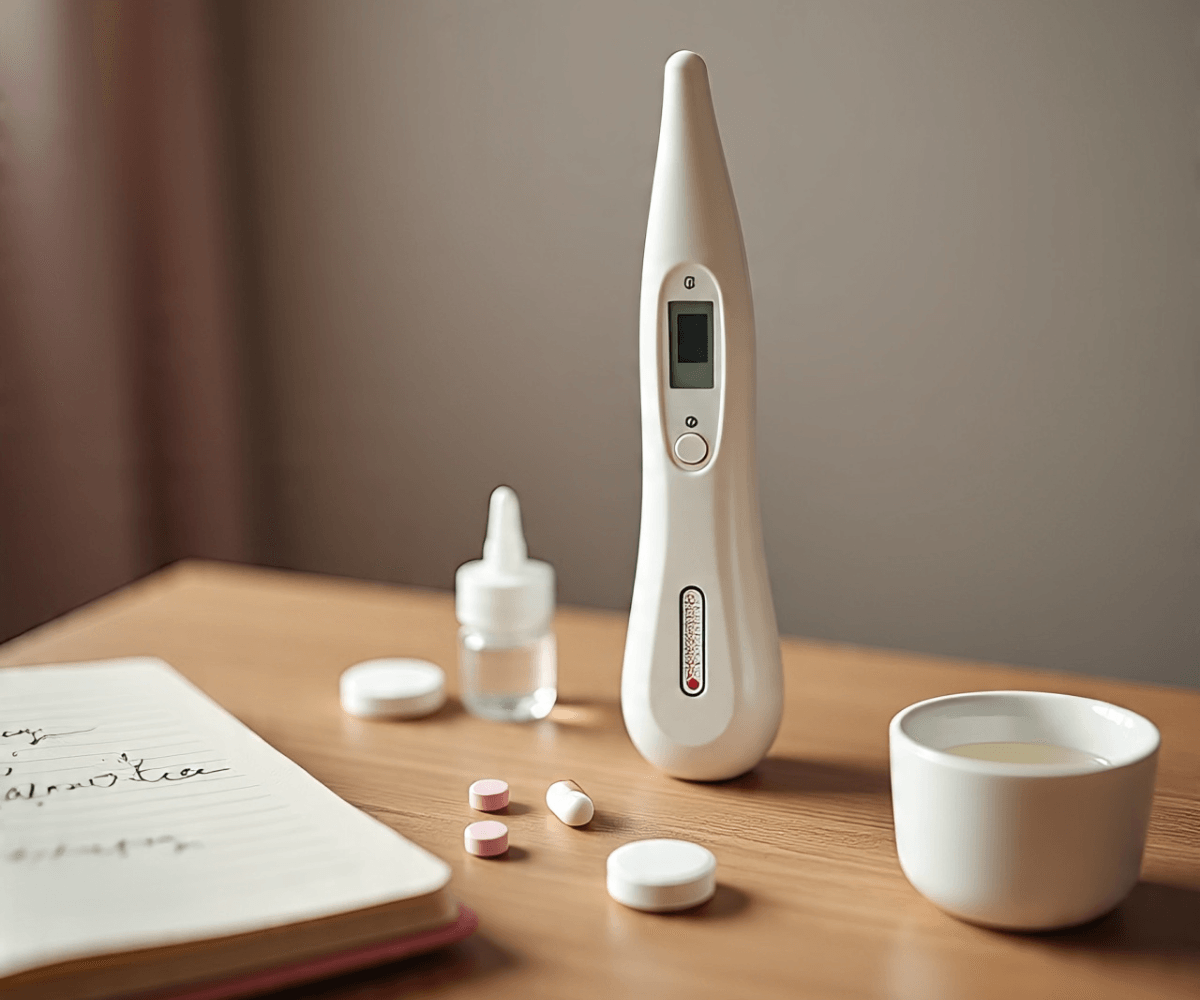Let’s just say it: birth control isn’t one-size-fits-all. Not everybody wants pills, implants, hormones, or procedures. Some people prefer to keep it as natural as possible—no artificial hormones, no devices, no hassle. Just. cooperate with the body, not against it.
Sounds perfect, right?
But then comes the huge, doubting pause: “Yeah, but does it really work?”
That’s the true question, and it’s not a clear yes or no. Because “natural” doesn’t necessarily equal “easy,” and efficacy can be variable—a lot. But for individuals who desire greater body awareness, fewer side effects, or just a more holistic fertility approach, natural methods can be a liberating alternative.
Let’s sort them out, the good, the not-so-good, and if they’re worth a look.
What Counts as “Natural” Birth Control?
First things first. When we mention natural methods, we’re referring to how to avoid pregnancy without hormones, devices, or surgery. That means no implants, patches, tablets, or IUDs. Instead, these methods depend on items such as timing, tracking, and behavior.
Following are the most popular types:
- Fertility Awareness Methods (FAM)
- Withdrawal (a.k.a. pulling out)
- Abstinence on fertile days
- Lactational Amenorrhea Method (LAM)
- Calendar Method
- Basal Body Temperature Monitoring
- Cervical Mucus Monitoring
They all function slightly differently but rely on the same overall concept: knowing and avoiding the fertile window.
1. Fertility Awareness Methods (FAM)
Accuracy relies on consistency—and patience.
This is the most popular one, particularly with people who want to get off hormonal birth control. FAM takes tracking ovulation by combining all of the following: body temperature, cervical mucus, calendar cycles, and in some cases, an app or LH test strips. The principle is easy—you abstain from sex (or use the backup method) when you are most fertile.
Sounds scientific, and it can be. But it does take real dedication. We’re talking morning temperature checks every day first thing, monitoring the consistency of your cervical mucus (yes, that’s a real thing), and measuring cycle length month by month.
Effectiveness? If used perfectly, it can be 95-98%. However, it’s more like 76–88% when used normally. That’s quite a big gap. One forgotten temperature reading or read mucus day can ruin the whole thing.
Pros:
- Hormone-free
- Tells you about your cycle
- No medical side effects
Cons:
- Time-consuming
- Needs a highly regular routine
- No STI protection
2. The Withdrawal Method (Pulling Out)
Easy in theory, but dangerous in practice.
Here’s the thing: lots of folks do this. Some on purpose, others just sort of… wind up there in the moment. The thinking goes that the guy with the penis pulls out before he comes. No sperm, no baby.
The catch? That pre-ejaculate (a.k.a. precum) might still have sperm in it. And in the heat of the moment, pulling out at the right time isn’t necessarily a guarantee.
Effectiveness? Perfect use: 96%. Typical use: approximately 78%. So approximately 1 out of 5 individuals using it become pregnant within a year’s time.
Advantages:
- No prep, no cost
- No hormones
- Always accessible
Disadvantages:
- Needs complete control and timing
- Not so reliable with younger or inexperienced couples
- Again, no protection from STIs
3. The Calendar Method
Traditional and not really that accurate.
This one’s likely the most common—and least accurate on its own. You monitor your cycle for a few months, then make an educated guess when you’ll ovulate. In a 28-day cycle, it is generally assumed that ovulation takes place on day 14.
Reality? It’s not so simple. Cycles fluctuate. Stress, sickness, travel, age, postpartum hormonal changes—everything disrupts ovulation.
Effectiveness? Around 76-88% with normal use.
Pros:
- Free
- Easy to learn
- Works better for people with super regular cycles
Cons:
- Not accurate for irregular cycles
- No STI protection
- Easily thrown off by lifestyle or health changes
4. Cervical Mucus Monitoring
Yes, we’re talking about discharge.
This is how it operates: During your cycle, your cervical mucus varies. Around ovulation, it gets stretchy, clear, and slippery—kind of like raw egg whites. Your body is telling you, “Hey, I’m fertile right now!”
You can avoid unprotected sex when you’re most likely to become pregnant by learning to recognize these changes. But you must be extremely attuned. It’s half science, half intuition.
Effectiveness? When done properly and consistently, it can be as high as 97% effective, but typical use brings it down to around 77%.
Advantages:
- Zero cost
- Hormone-free
- Assists in increasing body awareness
Disadvantages:
- Requires observation and record-keeping every day
- Can be overwhelming (if you’re ill, nursing, or stressed)
- Not the most straightforward way to find out solo
5. Basal Body Temperature (BBT) Method
In the morning, a thermometer becomes your new best buddy.

Your resting body temperature increases by a fraction of a degree after you’ve ovulated. Using the BBT method, you measure your temperature each morning upon waking. After some time, you will notice the slight shift that indicates ovulation.
But—and this is key—it only informs you after you’ve already ovulated. So this method is more effective at verifying fertility patterns over months rather than preventing pregnancy in the moment.
Effectiveness? Generally somewhere around 76-88% effective.
Advantages:
- Empowers you to know your cycle
- No hormones
- Low cost (just a good thermometer)
Disadvantages:
- Doesn’t alert you ahead of time
- Sleep disturbances play havoc with readings
- Learning curve involved
6. Lactational Amenorrhea Method (LAM)
Breastfeeding as birth control—but with strict guidelines.
For new mothers who are fully breastfeeding, this approach works… for a little while. Nursing inhibits ovulation, particularly in the first few postpartum months.

But here is the catch: it only works if ALL these apply:
Your infant is less than six months old.
You are fully breastfeeding (no bottles, no solids)
You haven’t yet gotten your period back
Effectiveness? Where all conditions are fulfilled: 98%. But a single missed feeding or a pacifier habit can play havoc with hormone levels and allow ovulation to creep back in.
Pros:
- Nurturally postpones fertility
- Fosters intimate breastfeeding bond
Cons:
- Short-term
- Not infallible
- Uncertain if routines change
So… Is Natural Birth Control Worth It?
It varies. For very committed, consistent, and willing-to-track couples—yes, certain methods can be very good. But if you’re likely to forget, have unpredictable cycles, or just aren’t a daily-tracking kind of person? You may want to try other things or use a natural method along with condoms or spermicide.
Most important thing to keep in mind? Effectiveness is not solely dependent on the method—it depends on how you use it.
Bottom Line
Natural birth control methods do work. But they take work, education, and faith—in yourself and your partner. They’re not a slacker option; they could be the most mindful and body-tuned way to control fertility. No shame in using them. No shame in not.
And don’t forget, it’s your body. You get to choose what works for your life, your beliefs, and your sense of peace.
Just ensure that the approach suits you—not vice versa.
FAQs:
Natural birth control refers to methods that don’t involve hormones or devices. These include tracking fertility, withdrawal, and abstaining during fertile days.
Yes, it can work—but only when used correctly and consistently. In fact, some fertility awareness methods are up to 98% effective with perfect use.
Fertility awareness, the calendar method, cervical mucus tracking, and withdrawal are popular options. However, each comes with a different level of risk and effort.
Not always. Because it requires daily attention and accurate tracking, it may not suit those with irregular cycles or unpredictable routines.
When used perfectly, it’s quite effective—up to 98%. However, typical use lowers effectiveness to about 76% because of human error.


